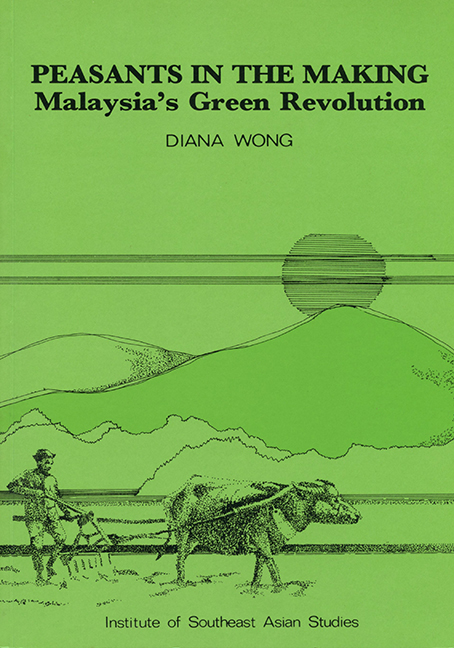Book contents
- Frontmatter
- Contents
- Acknowledgements
- Part I The Framing of the Study
- Part II The Anatomy of the Village
- Part III The Transformation of the Village Economy
- Chapter 7 The Production Cycle and the Division of Labour
- Chapter 8 Landownership and Land Tenure
- Chapter 9 Rural Indebtedness and the Marketing of Padi
- Chapter 10 Patterns of Change in the Non-Padi Economy
- Part IV The Transformation of Village Society: The Unfolding of Social Differentiation
- Part V Conclusion
- Appendix I Research Methodology
- Appendix II Questionnaire
- Bibliography
- THE AUTHOR
Chapter 10 - Patterns of Change in the Non-Padi Economy
from Part III - The Transformation of the Village Economy
Published online by Cambridge University Press: 21 October 2015
- Frontmatter
- Contents
- Acknowledgements
- Part I The Framing of the Study
- Part II The Anatomy of the Village
- Part III The Transformation of the Village Economy
- Chapter 7 The Production Cycle and the Division of Labour
- Chapter 8 Landownership and Land Tenure
- Chapter 9 Rural Indebtedness and the Marketing of Padi
- Chapter 10 Patterns of Change in the Non-Padi Economy
- Part IV The Transformation of Village Society: The Unfolding of Social Differentiation
- Part V Conclusion
- Appendix I Research Methodology
- Appendix II Questionnaire
- Bibliography
- THE AUTHOR
Summary
INTRODUCTION
The discussion has been confined so far to the padi economy of the village, which has been and remains the major source of livelihood for the village households. Apart from padi, 90 re of village land is under rubber cultivation and provides income for twenty-five households, either as owner-operator, rentier or tapper on a share- cropping basis. Other than padi and rubber however, there are limited employment opportunities within the village economy since neither animal husbandry nor handicrafts are carried out on a large scale.
Nevertheless, it should be borne in mind that the boundaries of the village economy have seldom, perhaps never, corresponded to the economic horizon of the villagers. To begin with, the nature of the marriage, residence and inheritance patterns (see Chapter 12) provide many villagers with access and /or claims to resources outside of the village. Shadli's data on marriage patterns, quoted below, indicate the potential significance of marriage in transcending village economic boundaries:
In this kampung there are 35 households with intra-village marriage and 92 with inter-village marriage. The remaining six are households of marriages between persons who did not stay in this kampung, but had come to live where their grandparents had some land.
Another “traditional” means of gaining access to resources outside of the village was to “pioneer” new land. As the surrounding jungle swamps were completely cleared by the early sixties, a group of about eighteen villagers went to open up uninhabited government land in Merbok, about forty miles away from the village, in 1965. This land was later repossessed by the government. Since then, the attempts of the villagers to stake claims to new land have been confined to the remaining state-owned jungles of the north, which they buy in the form of beli usaha for rubber cultivation. Fourteen village households, belonging to the well-to-do and middle categories, have acquired land in this way, in the full knowledge that this acquisition has no legal basis.
- Type
- Chapter
- Information
- Peasants in the MakingMalaysia's Green Revolution, pp. 160 - 168Publisher: ISEAS–Yusof Ishak InstitutePrint publication year: 1987



